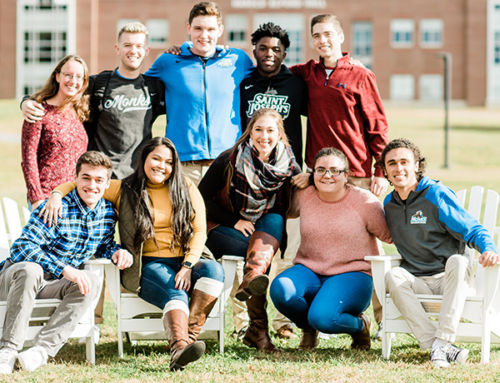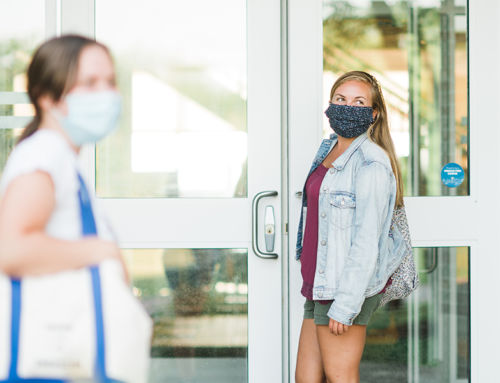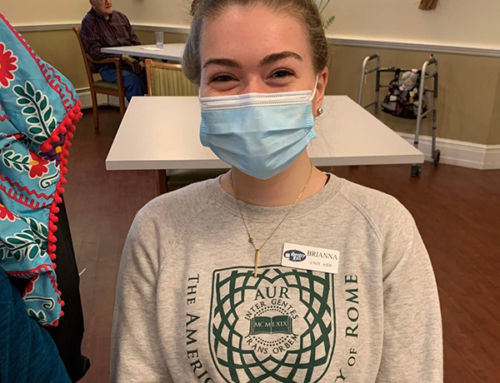Forging a Sustainable Future for Saint Joseph’s College: How this Small, Catholic College Plans to Buck the National Trend
-James Dlugos, Ph.D., President
For the past several years, Saint Joseph’s College has been remaking itself into an institution that better addresses the needs of our 21st century society while preparing students for productive citizenship within it. From an innovative center for nursing to new technologies in food production to cutting-edge science education programs, the College is positioning itself as a convener and problem solver, committed to excellence and guided by its core values. At the same time, the national landscape for higher education has become increasingly complicated.
An article published in the Washington Post this summer (and produced by The Hechinger Report, a nonprofit, independent news organization focused on inequality and innovation in education) quantified some of the painful demographic challenges. During the spring 2017 semester, 2.4 million fewer students enrolled in higher education at all levels nationally than in the fall of 2011, a drop-off unprecedented in the history of collecting data on higher education.(1)
The changes in the higher education market have hit online education particularly hard. Of the chief online officers at private, four-year colleges who were recently surveyed, 66% report that today's market for their online programs is "much more competitive" than it was five years ago.(2)
Perhaps more dire is the prediction from Moody’s Investors Service that the inability of small colleges to increase their revenue will result in triple the number of closures in the coming years.(3) It has been reported that small Catholic colleges have been among those disproportionately impacted.(4)
Let me be clear. Saint Joseph’s College intends to buck this trend and a good deal of strategic planning has taken place over the past six years to ensure it.
Any liberal arts college that ignores these challenging, national changes in demographics, societal needs, costs, and potential tax reforms will likely experience an unsteady financial future. In order for small, liberal arts colleges to sustain themselves, they must reflect upon and innovate their business model, while honoring their mission. Already our financial projections show that we must adapt, as all businesses must, to better match demands. To ignore this reality would mean facing shortfalls in the seven figures. Responsible fiscal management calls for both diversifying revenue and streamlining our expenses, yet without impacting the student experience.
Saint Joseph’s College has made a bold move to rewrite the rules regarding how colleges sustain themselves. Ours is a new model, because the old one simply will not work in the long term. For the sake of our students today and all who will come to us in the future, Saint Joseph’s needs to break away from the practice of continually raising tuition in order to sustain itself.
While Saint Joseph’s College continues to celebrate our traditions and provide the core undergraduate and graduate educational experience that has characterized its program for more than a century, we must evolve in order to prevail for another hundred years. Like other liberal arts colleges, we must channel our creative, intellectual energies into new pathways that can lead to greater institutional sustainability. For us, these new pathways are three innovative clusters or institutes that simultaneously contribute to statewide economic challenges including workforce development, provide our students with new learning opportunities, and generate new revenue streams. These three institutes are: sustainable agriculture, sustainable hospitality, and integrative aging. The first of these three was launched this fall as the Institute for Local Food Systems Innovation. In the coming months, we will announce the second of these institutes.
Balancing innovation and tradition can be challenging and uncomfortable; yet, avoiding change is not an option for achieving sustainability. In order to adapt to changes in the overall needs of our state and nation, Saint Joseph’s College must remain at the cutting-edge by growing in some areas while reorganizing and consolidating other areas to achieve greater efficiencies.
Our pathway is to remain competitive, relevant, nimble, while carrying forward the College’s mission.
1) Jon Marcus, “Many small colleges face big enrollment drops. Here’s one survival strategy in Ohio,” Washington Post, June 29, 2017 https://www.washingtonpost.com/news/grade-point/wp/2017/06/29/many-small-colleges-face-big-enrollment-drops-heres-one-survival-strategy-in-ohio/?utm_term=.66c25c676dcb
2) Ron Legon, Ph.D. and Richard Garrett 2017 “The Changing Landscape of Online Education: Quality Matters & Eduventures Survey of Chief Online Officers,” https://www.qualitymatters.org/sites/default/files/research-docs-pdfs/CHLOE-First-Survey-Report.pdf
3) Kellie Woodhouse, “Closures to Triple: The inability of small colleges to increase their revenue will result in triple the number of closures in the coming years, a new Moody's report projects,” Inside Higher Ed, September 28, 2015 https://www.insidehighered.com/news/2015/09/28/moodys-predicts-college-closures-triple-2017
4) Rick Seltzer, “Days of Reckoning,” Inside Higher Ed, November 13, 2017 https://www.insidehighered.com/news/2017/11/13/spate-recent-college-closures-has-some-seeing-long-predicted-consolidation-taking#.WgrRyvTUd1Q.link November 13, 2017


